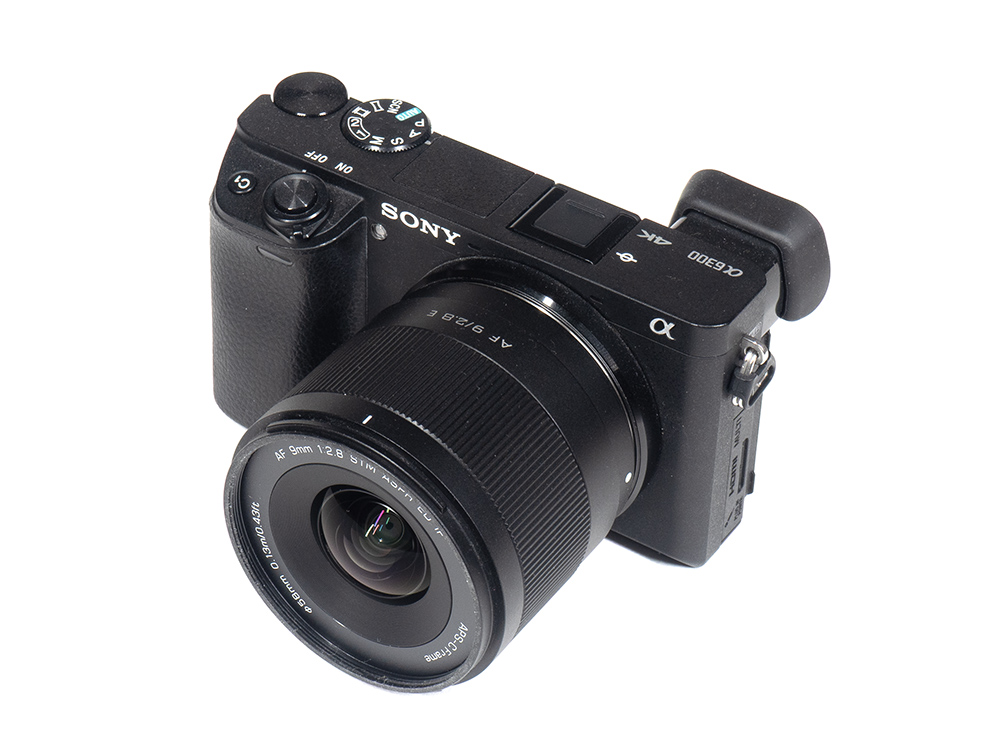Introduction
It almost feels as if we are an exclusive Viltrox testing lab, given all the lenses that we have tested lately. And we aren’t even done yet for this year. This time it’s about the Viltrox AF 9mm f/2.8 E Air – an APC-format ultra-wide prime lens. That’s equivalent to about 14mm on full-format. The lens stays, of course, true to the cause of their “Air” lineup. Thus, it’s both very compact and very affordable at just $199 USD / 229 EUR / 190 GBP. The lens is available in E- (as reviewed here), Z-, and X-mount (at some point). So far, the low price tag didn’t have an impact on image quality, but ultra-wide lenses are difficult beasts, so let’s check whether their impressive run remains intact.
The build quality remains in line with what we’ve seen of the “Air” lineup. Thus, it’s using good-quality, consumer-grade engineered plastics based on a metal mount. The focus ring turns smoothly. And a small petal-shaped lens hood is supplied. A USB-C port on the lens mount can be used for firmware updates.
The AF uses a conventional STM (stepping motor), which is well sufficient for moving the small lens elements in a fast and silent manner. Manual focusing is very precise.
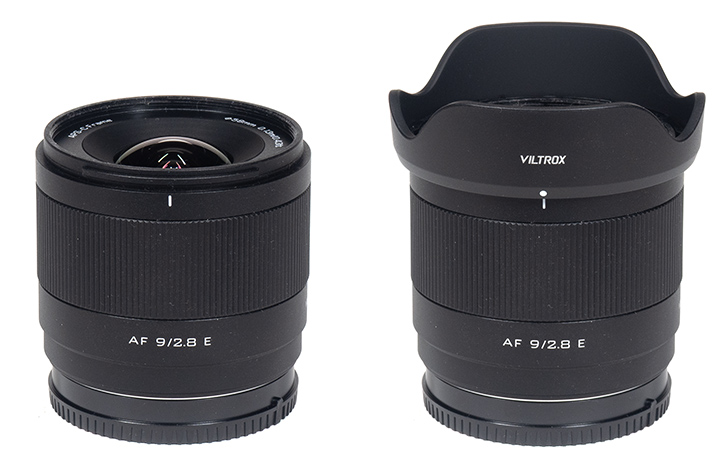
| Specifications | |
|---|---|
| Optical construction | 13 elements in 11 groups, incl. 3x ED, 3x HR, 2x aspherical |
| Number of aperture blades | 7 |
| min. focus distance | 0.13m (max. magnification 0.15x) |
| Dimensions | φ65 x 56.4 mm |
| Weight | 175g |
| Filter size | 58mm |
| Hood | petal-shaped (bayonet mount, supplied) |
| Available Mounts | Sony E, Nikon Z, (X-mount) |
| Other features | – |
Distortions
Despite the petite size and the rather extreme focal length, Viltrox managed to keep image distortions well under control – which makes you wonder why the OEMs can’t do it. In RAW images, there’s only a mild barrel distortion of less than 1%. Auto-correction reduces this further, although it overshoots a little to pincushion distortions.
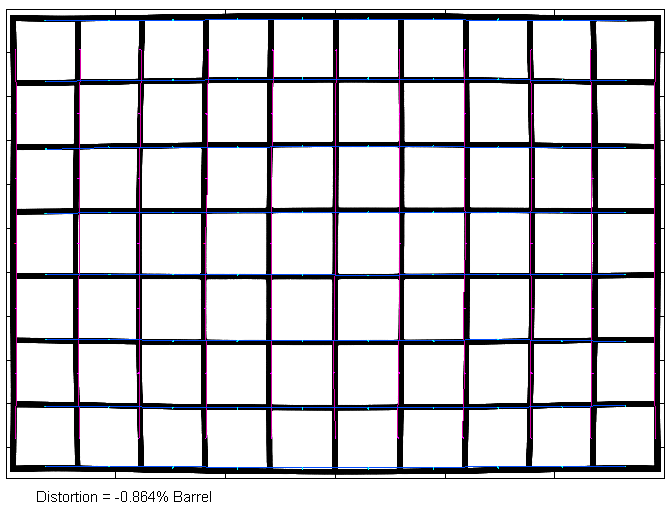
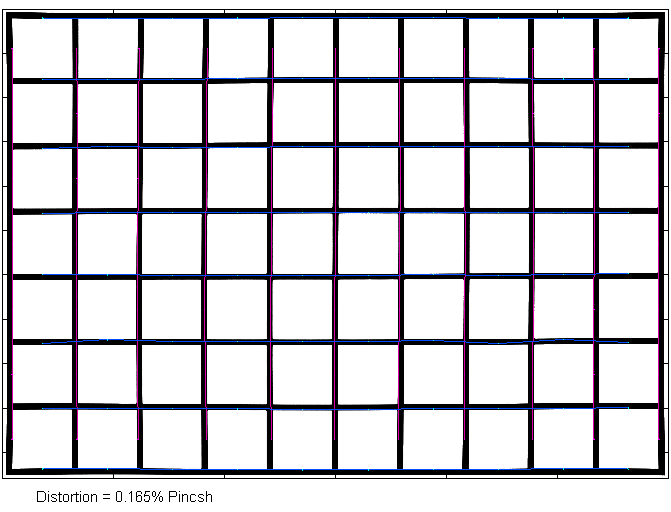
Vignetting
The Viltrox AF 9mm f/2.8 E Air has one clear weakness – vignetting. A light falloff of 3 EV (f-stops) wouldn’t be unusual for similar lenses on full-format cameras. However, it’s a bit much in the APS-C scope, where the figures are exceeding our usual scale substantially here.
Auto-correction doesn’t help too much, unfortunately. It cuts off 1.6 EV at f/2.8, but, strangely, we didn’t really see much of an effect from f/4. There’s certainly some room for improvement here for a firmware update.
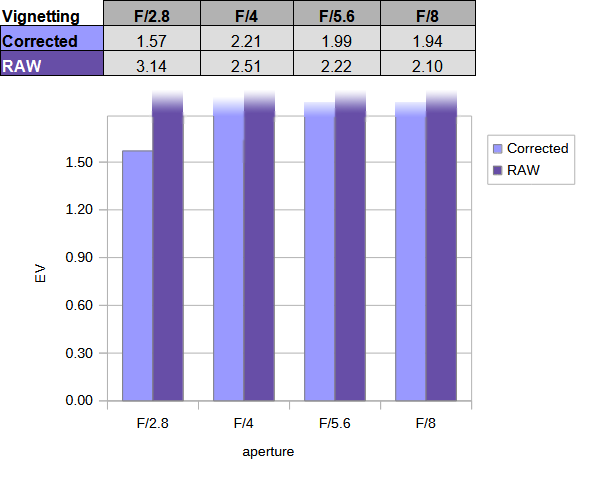
MTF (resolution)
The resolution characteristic of the Viltrox left us quite baffled. We can only describe it as tack sharp straight from f/2.8. Even the corners are easily very good. Stopping down to f/4 lifts the quality marginally, but the lens is pretty much diffraction limited. Don’t stop down beyond f/8 unless needed.
The centering quality of the tested sample was good. The field curvature is fairly low.
Please note that the MTF results are not directly comparable across the different systems!
Below is a simplified summary of the formal findings. The chart shows line widths per picture height (LW/PH) which can be taken as a measure of sharpness. If you would like to know more about the MTF50 figures, you may check out the corresponding Imatest Explanations.
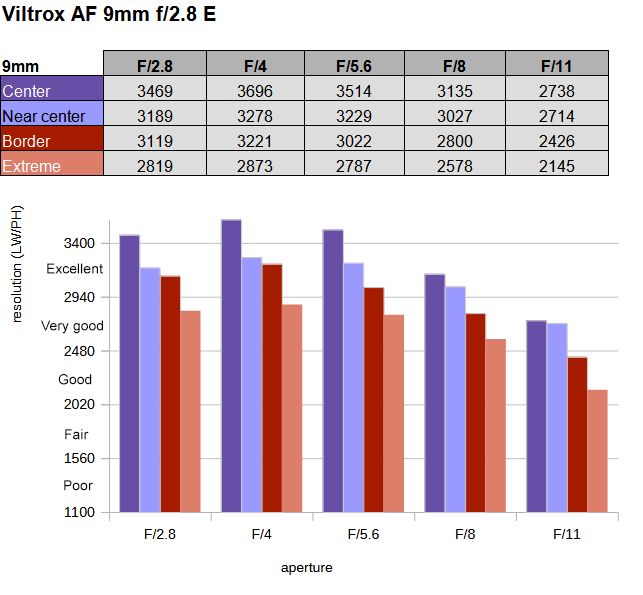
Chromatic Aberrations (CAs)
Lateral CAs are low, with a peak CA pixel width of ~0.3px at the image borders, which is, once again, very impressive.
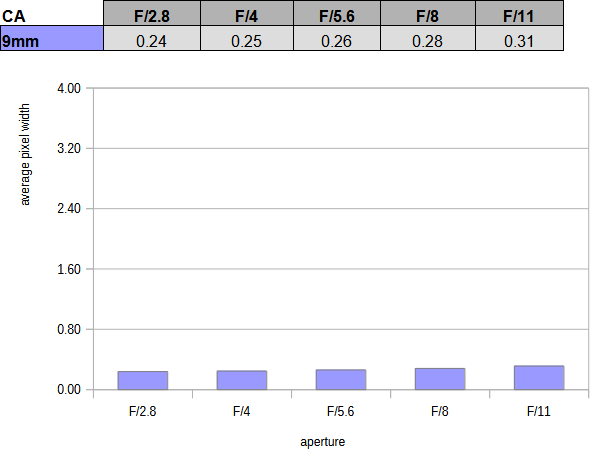
Sun Stars
Below is a sequence of 100% cropped images from f/2.8 all the way up to f/16 – illustrating the sun star behavior. Sun stars are an aperture effect that shows up if a bright light source is part of the scene (usually in night shots).
The aperture shape is near circular at f/2.8, so there isn’t any sun star effect to speak of here. They start to appear at f/4 already, although you should stop down to f/8 if you are really after the effect. The rays are nicely pointy (rather than fan-like). The best results are, as usual, available at f/11 and, more so, at f/16 – although image softness will be an issue due to diffraction if you stop down this much.
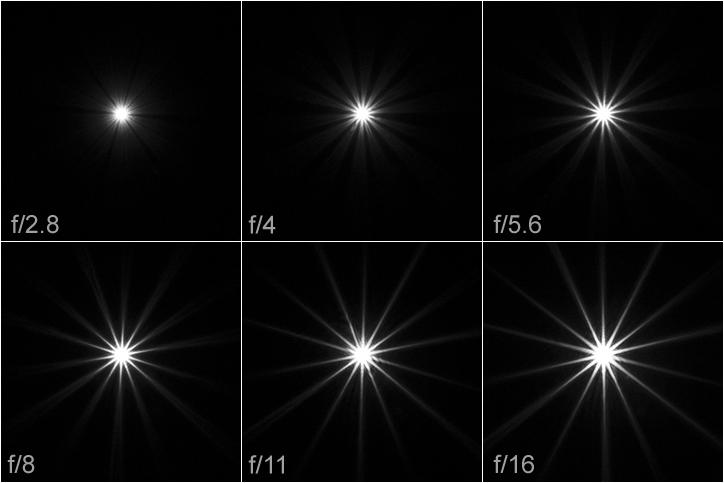
Competition
In terms of value, the Viltrox lens doesn’t really have any competition worth mentioning. Even the fully manual Laowa 9mm f/2.8 Zero-D is twice the price. The Sony E 11mm f/1.8 or (the yet-to-be-tested) Sigma 12mm f/1.4 DC Contemporary come to mind if you’d like to have a little more speed in your life. The Samyang AF 12mm f/2 E is probably the closest match in terms of pricing.
Sample Images
Viltrox continues to release quality lenses at prices that can't be matched by the traditional players - it's not even close. This also applies to the Viltrox AF 9mm f/2.8 E Air. It's an amazingly sharp lens despite the extreme focal length. Some other players should be ashamed in comparison (I'm looking at you, Fujifilm ...). Lateral CAs are very low, and image distortions are quite easy to live with as well. If nice sun stars are your thing, the lens can do that for you. There's one obvious flaw, though - vignetting. It's not a showstopper, but expect to require some manual correction in post.
In terms of build quality, the Viltrox lens is nothing special, neither in good nor bad terms. The plastic quality is quite decent, and the assembly quality is flawless. It's good consumer-grade quality. The AF is snappy. You can forgive the lack of weather sealing.
Viltrox lenses are available from shops like Amazon, B&H or the Viltrox Web Store.
Given the very low pricing, you may think of the Viltrox AF 9mm f/2.8 E Air as a bottom feeder, but this doesn't do justice here because, at least in terms of sharpness, it is up there with the very best - and far better than most. So it's more than just a simple value recommendation here.
The Good
- Brilliant sharpness
- Amazing affordability
- Low RAW distortion
- Very small and light-weight
The Bad
- Heavy Vignetting
- Auto-correction profile needs some work
-
Optical Quality
-
Build Quality
-
Price / Performance


